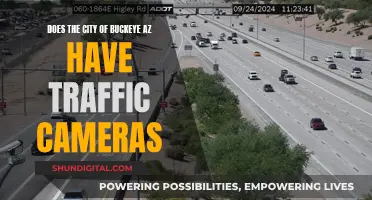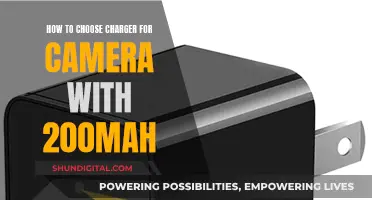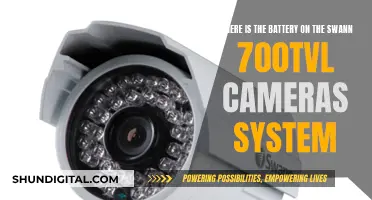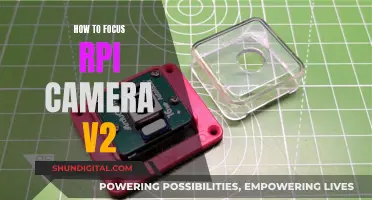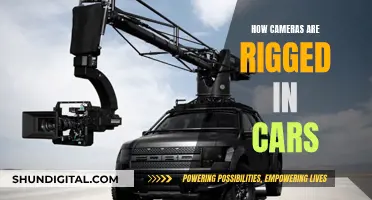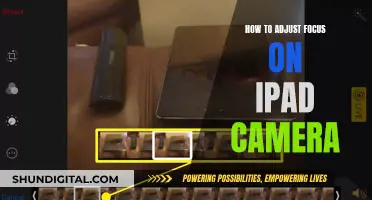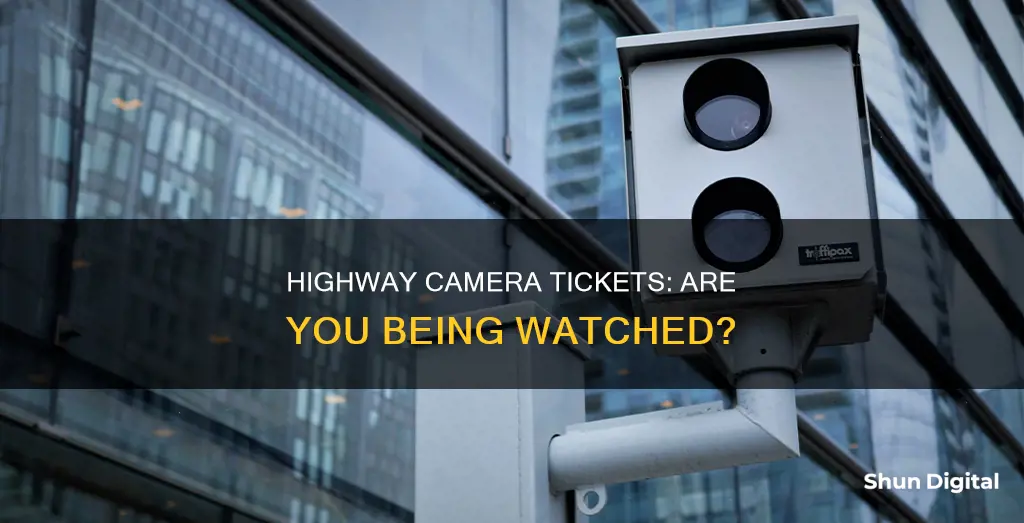
Highways and roads are increasingly monitored by cameras, with many different types of cameras tracking our driving. Some of these cameras are used to monitor traffic speeds and conditions, while others are used to issue tickets and violations. These automated traffic enforcement cameras are placed at busy intersections to detect when a motorist enters on a red light or to monitor speeding violations. The use of these cameras varies by state, with some states permitting, limiting, or prohibiting their use. While these cameras can be controversial, they are generally enforceable in states that allow them, and disputing tickets can be difficult.
| Characteristics | Values |
|---|---|
| Camera Type | Red Light Cameras, Speed Cameras, Traffic Sensor Cameras, Automated Number Plate Recognition (ANPR) Cameras |
| Camera Placement | Mounted near busy intersections, on poles, on top of traffic signals, on light poles above roadways, in enforcement cars |
| Ticketing | Automated ticketing systems issue tickets by mail |
| Ticket Characteristics | Include fines, attached photo as evidence, citation copy |
| Ticket Response | Hire a traffic ticket attorney, ignore the ticket |
| Ticket Cost | $35-$100 in fines plus additional fees |
| Points | Points added to driving record, potentially leading to license suspension and increased insurance rates |
| Camera Legality | Varies by state; more than ten states have banned traffic camera tickets |
| Camera Manufacturers | Private companies, including women-based businesses |
What You'll Learn
- Speed cameras automatically detect speeding violations and issue tickets
- Red light cameras detect red light violations and are placed at busy intersections
- Traffic sensor cameras are used to measure traffic flow and determine traffic light timing
- Automated Number Plate Recognition (ANPR) cameras are used to track the whereabouts of drivers
- Camera tickets are enforceable in states that permit them

Speed cameras automatically detect speeding violations and issue tickets
Speed cameras are a type of automated enforcement technology used to detect speeding violations and deter speeders. They are usually set up near school zones or areas where drivers often exceed the speed limit. These cameras utilise radar equipment that is linked to the camera. When the radar detects a vehicle that is exceeding the speed limit, the camera is triggered to take a picture of the vehicle and its license plate. Speed cameras also record the speed of the vehicle, along with the date, time, and location of the violation.
The procedures for issuing camera tickets vary by jurisdiction. In some places, a Provincial Offences Officer or police officer will review the camera footage to verify the violation and issue a ticket. The ticket is then mailed to the registered owner of the vehicle. In other places, speeding tickets issued through automated speed enforcement (ASE) systems are automatically processed and mailed to the last known address of the registered owner of the vehicle.
Penalties for speeding camera tickets are typically less severe than for a non-camera traffic citation. In most cases, a traffic violation conviction based on a camera enforcement system will result in a fine only, with no demerit points added to the offender's driving record or insurance implications. However, there may be exceptions in certain states or jurisdictions.
Unlocking the Secrets of Free Camera Mode
You may want to see also

Red light cameras detect red light violations and are placed at busy intersections
Red light cameras are an automated enforcement system that detects red light violations. They are placed at busy intersections to monitor vehicles passing through and catch those that run red lights. These cameras are synchronised with the traffic signals, capturing multiple images of vehicles that fail to stop when the light is red. The system continuously monitors the traffic signal, and the camera captures any vehicle that doesn't stop during the red phase.
Red light cameras are often placed at busy intersections and can be identified by their bulkier structure, consisting of a large camera box and two external flashes mounted separately on poles. Multiple cameras are usually installed at each intersection to capture angles from multiple directions.
These camera systems are designed to reduce red light violations and improve road safety. Studies have shown that red light cameras are effective in reducing both red light violations and crashes. For example, an IIHS study found a 21% reduction in fatal red light running crash rates and a 14% decrease in all types of fatal crashes at signalised intersections in large cities.
When a violation is detected, the vehicle's owner typically receives a ticket in the mail, along with photographs of the violation and instructions for paying the fine or contesting the charge. In some states, the violation is treated as a civil offence, resulting in no driver's licence points or insurance implications. However, ignoring a red light camera ticket can have consequences, such as damage to one's credit score.
While red light cameras are a valuable tool for enforcing traffic laws, they are not without controversy. Some people argue that they invade privacy or that they are primarily used for revenue generation rather than improving safety. Additionally, the effectiveness of these cameras depends on proper signal timing, adequate yellow time, and grace periods for motorists.
Reducing Noise in Underexposed Camera Raw Files
You may want to see also

Traffic sensor cameras are used to measure traffic flow and determine traffic light timing
Traffic sensor cameras are an essential component of traffic control systems, which also include traffic lights, signs, and other devices. These cameras are typically installed on top of traffic signals or mounted on light poles above roadways. They are usually small, cylindrical, or dome-shaped and enclosed in weatherproof housing.
Traffic sensor cameras have several functions, primarily measuring traffic flow and determining optimal traffic light timing. They help manage traffic patterns and improve overall flow by detecting the presence of vehicles, monitoring their speed, and counting the number of vehicles passing through a specific point. This information is crucial for controlling traffic signals, ramp metering, freeway management, and toll road monitoring.
Unlike enforcement cameras, such as red-light cameras or speed cameras, traffic sensor cameras are not tied to any enforcement system. The footage they capture is generally not archived or used for incident reconstruction or issuing tickets. Instead, their purpose is to provide real-time data to traffic engineers and authorities to make informed decisions about traffic management and improve road safety.
By utilising traffic sensor cameras, transportation officials can gain valuable insights into traffic patterns and congestion. This data helps in developing effective traffic management strategies and road projects to enhance traffic flow and reduce bottlenecks. Additionally, these cameras can aid in incident response by providing early warnings of accidents or disruptions, allowing for quicker assessment and action by emergency services.
In summary, traffic sensor cameras play a vital role in modern traffic control systems by providing critical data on traffic flow. This information assists in making informed decisions about traffic light timing, improving road safety, and reducing congestion. While they do not directly enforce traffic laws like other camera systems, they are an essential tool for authorities to optimise traffic management strategies and enhance overall road efficiency.
Unveiling the Highest-Resolution Camera: Unmatched Clarity and Detail
You may want to see also

Automated Number Plate Recognition (ANPR) cameras are used to track the whereabouts of drivers
Automated Number Plate Recognition (ANPR) cameras are a type of mass surveillance device that uses optical character recognition on images to read vehicle registration plates and create vehicle location data. ANPR cameras are used by police forces worldwide for law enforcement purposes, including checking if a vehicle is registered, licensed, or stolen. They can also be used to track the whereabouts of drivers, which has raised privacy concerns and led to criticisms of government overreach.
ANPR cameras are often mounted on police vehicles, but they can also be fixed in specific locations, such as highways, roads, or car parks. These cameras are capable of reading number plates and identifying the make, model, and colour of vehicles, regardless of their speed. The data captured by ANPR cameras can be sent to a central server or used to cross-reference government databases. This enables various applications, such as toll payment verification, traffic management, and access control.
In terms of security and access control, ANPR cameras are employed at sites requiring a high level of security, such as prisons and private warehouses. These cameras can grant access to specific vehicles based on a predefined list, enhancing security and providing full visibility over entry and exit points.
While ANPR cameras offer benefits in terms of automation and efficiency, there are also concerns about their potential for misuse. Critics argue that ANPR cameras enable government tracking of citizens' movements and contribute to mass surveillance. Additionally, there have been instances where ANPR data has been misused by law enforcement, such as in the case of Edmonton Sun reporter Kerry Diotte, who was added to a database of "high-risk drivers" after writing an article critical of the police.
To address privacy concerns, some countries have implemented regulations governing the use and retention of ANPR data. For example, the UK's Protection of Freedoms Act includes provisions for controlling and restricting the collection, storage, and use of personal information obtained through surveillance cameras, including ANPR.
Activating Arma 3's Camera Mode: A Step-by-Step Guide
You may want to see also

Camera tickets are enforceable in states that permit them
Speed cameras are placed on the side of the road, usually in residential areas, and they automatically clock vehicles as they pass by. The camera system identifies the speed of the vehicle, the licence plate, the make and model of the car, and the time and date. This information is then reviewed by a police officer, who decides whether to issue a ticket.
Red-light cameras are typically installed at busy intersections to detect when a motorist enters on a red light. If a violation is detected, the camera will take multiple images of the car, and the motorist will receive a ticket in the mail.
In California, for example, red-light cameras are legal and enforceable. A ticket is triggered when a vehicle passes over a sensor on a red light, and the camera captures a photo of the licence plate and the driver. The registered owner of the vehicle then receives a ticket in the mail, along with the fine amount, photo evidence, and information on how to challenge the ticket.
While camera tickets are enforceable in some states, there are often ways to fight them. For example, in California, a red-light camera ticket is only enforceable if the camera captured a clear photo of both the driver's face and licence plate. Additionally, the yellow light timing must meet the legal requirement, and there must be proper signage posted at the intersection.
Importing Camera Raw Files into Adobe Premiere: A Step-by-Step Guide
You may want to see also
Frequently asked questions
Highway cameras are used for speed and red-light enforcement. They are a type of automated enforcement technology used to detect and deter speeders and red-light runners.
If you receive a ticket in the mail, you may want to hire a traffic ticket attorney to help you fight the charge. However, since photo radar tickets are just a fine and do not result in demerit points or impact your driving record, it may not be worth the cost of hiring a lawyer.
The location of highway cameras varies by jurisdiction. In some places, they are only permitted in certain areas, such as school zones, rail crossings, and work zones, while in other places they may be used statewide.
Highway cameras use automated enforcement to clock the speed of passing vehicles, take a photograph of the vehicle and licence plate, and allow the city to mail a ticket to the owner of the vehicle.


